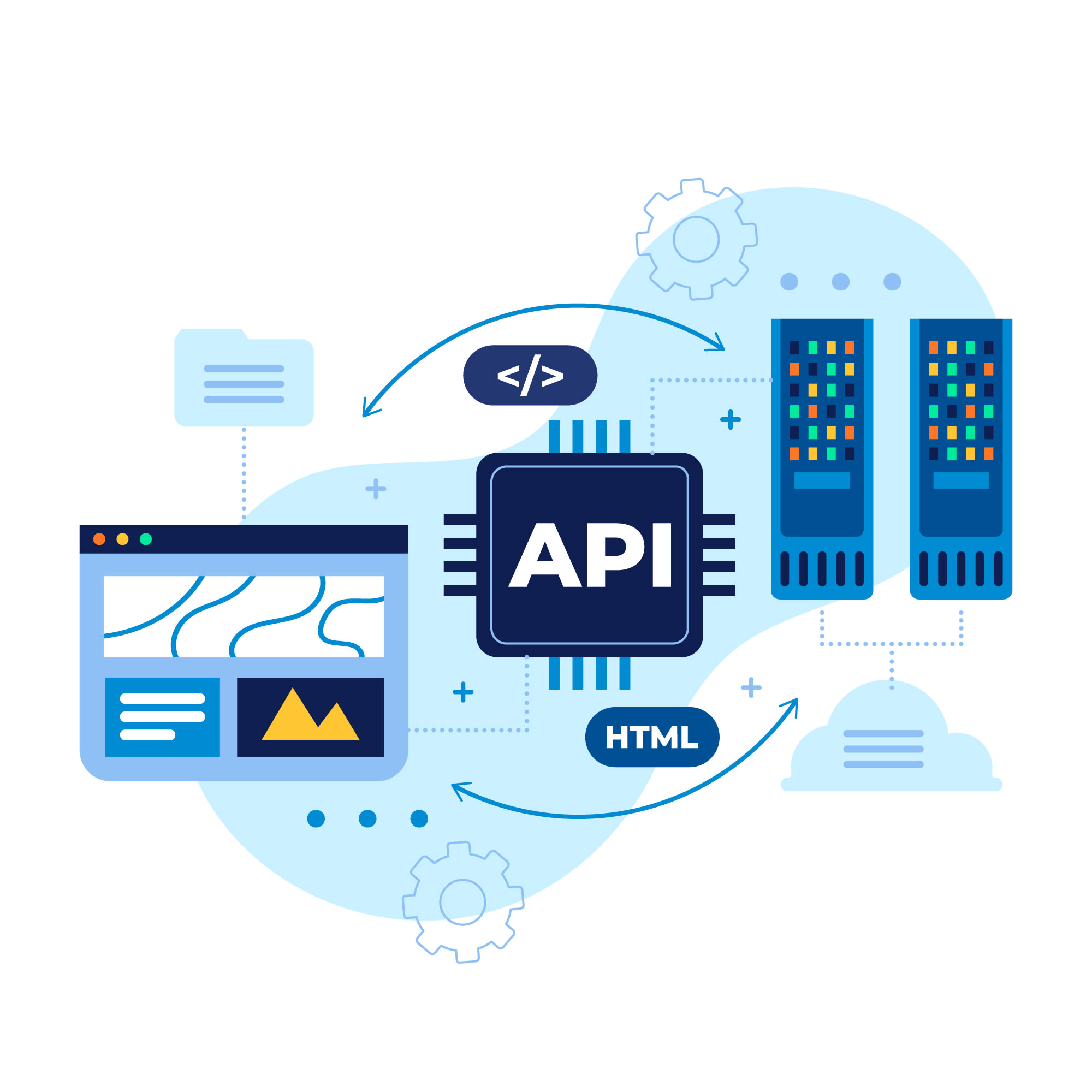
What is API Integration?
API integrations facilitate communication between applications and underpin digital transformations.
The world of technology is constantly evolving, and with it, the need for seamless integration between various systems and applications has become crucial. This is where API (Application Programming Interface) integration comes into play.
API integration enables different applications to communicate with each other, exchanging data and functionality in a controlled and secure manner. We'll explore what API integration is, its importance, and how it can benefit businesses and developers alike.
API integration is the connection between third party applications via their APIs (Application Programming Interfaces) enabling communication, interactivity and data exchange. API integrations power processes throughout many departments and layers of an organisation to keep data in sync, enhance productivity and drive revenue.
API is an interface and is part and parcel of almost everything in the digital world, enabling seamless operation and performance of applications and web systems.
API integrations are the data connections enabling multiple applications or services to communicate with each other through their respective APIs. Without these integrations, the different applications, microservices, Micro Apps, and SaaS platforms that make up a larger application would be unable to communicate and interact.
APIs are essentially a set of rules, protocols, and tools that define how different software components should interact with each other. They act as a bridge, enabling communication between various applications, databases, and services.
The importance of API integration lies in its ability to simplify and streamline complex processes. By connecting disparate systems, organizations can automate workflows, reduce manual errors, and improve overall efficiency. In essence, API integration allows businesses to leverage the best of both worlds by combining the strengths of various applications and services to create a unified and powerful solution.
What is involved with API Integration
- Identifying APIs: Determine which APIs are needed for the integration and obtain the necessary credentials, such as API keys, authentication tokens, or other required information.
- Setting up the integration: Configure the API connections, define the data formats, and establish the communication protocols between the systems.
- Developing the integration: Write code or use integration tools to create the necessary interfaces and connections between the APIs.
- Testing and debugging: Test the integration to ensure that it functions correctly and troubleshoot any issues that arise.
- Deployment: Deploy the integrated system and configure it for production use.
Why use API Integration
- Integrating different software systems within an organization to streamline workflows and enhance data sharing
- Connecting with external services or platforms, such as social media or payment gateways, to extend the functionality of an application
- Creating a unified data platform by combining data from multiple sources
- Enabling real-time data synchronization between systems
- Facilitating the development of new applications by leveraging existing APIs and services

Need help with API Development?
threenine.co.uk can help you with your API Development. We have experience in building APIs for a range of clients, from small startups to large multi-national enterprises. We can help you with your API Development, whether you need a new API or need to improve an existing one.
What are the common use cases of API Integration
- Backend-as-a-Service (BaaS) integrations, which connect mobile or web applications to backend services
- Enterprise application integrations, which connect different enterprise systems, such as ERP, CRM, or HR systems
- Third-party service integrations, which connect applications to external services, such as payment gateways, marketing automation tools, or social media platforms
- Data integration, which connects data sources and enables data sharing and synchronization between different systems.
Key benefits of API Integration
- API integrations facilitate communication between applications driving digital transformations.
- APIs enable data exchange, with REST APIs being the most popular due to their flexibility.
- API integration include automation, open standards, improved customer experience, scalability, and driving business innovation.
- By automating workflows and reducing manual errors, API integration can significantly improve the overall efficiency of an organization. Leading to faster processing times, reduced operational costs, and improved customer satisfaction.
- API integration ensures that data is consistent and up-to-date across all systems, reducing the risk of errors and inconsistencies. This improves the accuracy of decision-making and helps businesses make better-informed decisions.
- As businesses grow, so do their systems and applications. API integration allows for easy scalability, ensuring that systems can handle increased data loads and user demands without compromising performance.
Conclusion
API integration is a powerful tool that enables businesses and developers to create seamless, integrated solutions by connecting various applications and services. With its numerous benefits, such as increased efficiency, improved data quality, and enhanced collaboration, API integration has become an essential component of modern businesses. By understanding the different types of API integration and their use cases, organizations can leverage this technology to create powerful, innovative solutions that drive growth and success.

